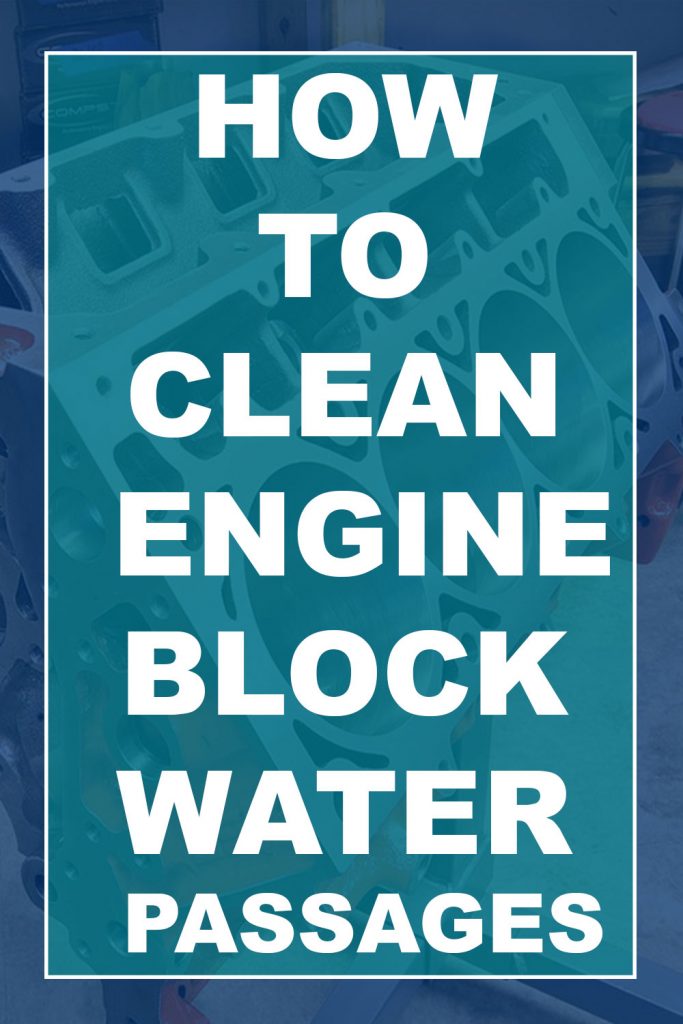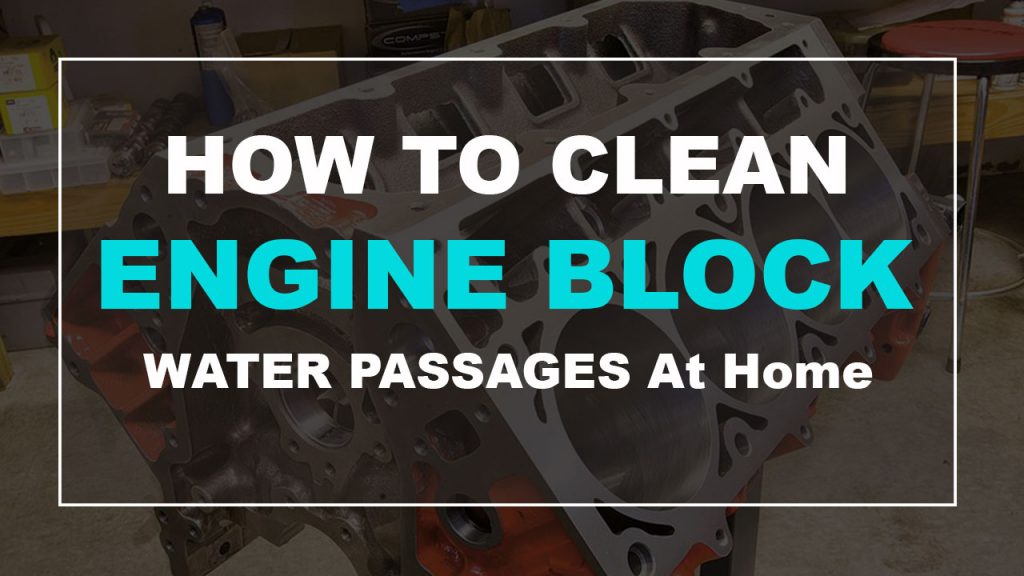Last updated on January 25th, 2020 at 03:20 pm
This step by step guidepost on how to clean engine block water passages will show you some of the best ways to clean an engine block without endangering your car engine.
It is very true that cleaning your engine block is a very risky task and that’s because you can easily destroy other parts or even the entire engine. The good news is that you can easily clean-up your engine block without it taking most of your day, all you need is to have the correct tools, which I believe that you already have in your box and if you don’t, just don’t worry I show you soon.
Next, you have to follow the steps below.
But first, what on earth is an Engine Block?
You need to have a little understanding of what engine block is all about if you must begin. An engine block, which is also called cylinder block is a case in vehicles that are constructed with casted irons.
This engine block accommodates many components and the cylinder including the crankcases, cooling systems, exhaust system and others. And because all these, things like oil, dirty, coolant and sludge develop on your engine block and will cause many difficulties on internal components.
Related Article: Cleaning Foggy Headlights: How to Clean oxidized headlights with vinegar
BEST WAY TO CLEAN AN ENGINE BLOCK
There are different procedures you will need to take to have your engine block cleaned. To do this, just follow this simple procedure below this is one of the best ways to clean an engine block
Procedure 1
Arrange the tools you need to clean it: you need to fill-up heated water on a little bucket, then connect your wire cup to drilling tool and ensure it is fully charged.
Procedure 2
With your wire brush, clean-up your engine block: it has been observed that most of the rusted parts of the block can be cleaned with a wire brush and the heated water. So you can put your brush inside the heated water and then scrub as much as you can. After which, get a rag you will be using often to be wiping off your engine block to notice places that need to scrub.
Procedure 3
Remove all rusted parts in every area with your wire cup on the drilling tool: here you will get the opportunity of removing rusted parts from smaller areas. Please carefully observe the areas you have drilled because your wire cup has the ability to destroy your wire and paintings. Note that the tool is to be used for getting rusted parts off in areas your wire brush can’t reach.
Procedure 4
Wipe-off your engine block: for you to achieve this, you need to keep using a neat rag which should have been inside the heated water for a long time to have the engine block wiped properly. After which, you should redo this drying process using another dry rag to cleanse any other moisture that is left behind.
Procedure 5
Use WD-40 to have your engine block treated: in case there are options to spray via all areas while in the plastic bag for some time to stop the fumes from spreading, you can choose that. But if not, it is ideal to keep spraying it using your rag to help WD-40 reach areas the spraying wouldn’t have reached.
Please note that there are individuals who keep using acid to remove rusted particle from engine block quickly. But doing this will cause more troubles once you are unable to rinse off the acid because this will corrode the engine block.
Here are listed things that are required:
- A drill
- Your wire cup
- Your wire brush
- Heated water
- Little bucket
- A WD-40
- A big garbage bag
- A cleaning rags
HOW TO CLEAN AN ENGINE BLOCK WATER PASSAGES
Let’s see how you can clean an engine block water passages. Please note that before you begin to clean up the engine block, ensure that all needed tool is in place, so you can experience a smoother process. Here are the things you will need:
- You need an Air compressor: the usefulness of air compressor is to blow or dry-clean dirty. In case it’s not available, please ensure you get one because it will be needed.
- You need protective gloves: a protective glove will be needed, and it has to be a chemical resistant one so that it can give your hands protection from toxic substances.
- Get safety glasses or goggles: having this with you will help you eliminate harmful particles that might enter through your eyes.
- Get a big tub or bucket: please ensure that your engine block fits in the tub.
- A cleaning absorbent rags: you need to be with at least 6 pieces of rags.
- You need a plastic scraper tool: this is used so that all rusted areas will be scrubbed properly.
- You need WD40: this will help in lubricating and protecting your engine block.
Below are the procedures on cleaning engine block water passages
You will need to carefully remove your engine block from the vehicle if you intend to begin this cleaning process. In case you do not possess the needed know-how and tools to handle this process, then get a professional to handle it.
Taking off your engine block require the application of fluid and then disconnect the hose like the exhaust pipes. Below are the steps to follow.
- You should wear your glove and glasses for protection before starting. This will help you to avoid particles from entering your eyes and the glove will give your hands the needed protection from a watery substance that could hurt you.
- Bring the plastic scraper to scratch off the gasket material on the cylinder head. Please you should not use a metal scraper to avoid scratching the surface of the metal.
- Put your engine block inside a tub. But you need to be cautious to prevent banging it and damaging the nozzles. Then empty the liquid side cleaner on the engine block in the tub.
- Make use of your rag scrubbing your engine block properly, please don’t use a steel brush or scrubbing tools. But ensure that every area of the engine block is cleaned properly.
- Once you are done with the engine block scrubbing, then fill-up another tub with heated water. Put your engine block inside and top-up heated water again submerges it fully.
You need to allow it to stay longer to enable it to remove all dirt. You can still make use of spraying washer in case you have.
- Take off your engine block from the tub and then put it on a good surface. Get a different rag so to wipe out excessive water from every area.
- Once you have dried the engine with a rag, get your air compressor to dry-up the engine block very well to prevent any dust particles.
- Once you have dried up the engine’s head, place a neat towel on it to prevent dirt from entering inside.
- Examine the engine block for cracking. Once you find any, then buy another one or contact a pro.
You can now start spraying your engine block slightly and allow it for a moment to get dried before it is installed back to the vehicle.
Read next: Hydroplaning: All You Need to Know and how to prevent hydroplaning














